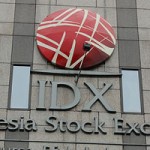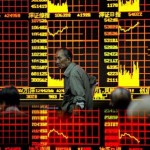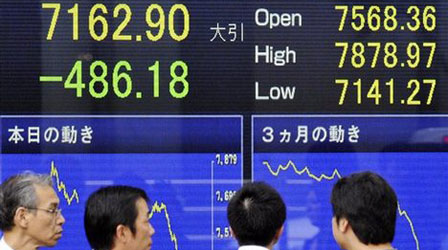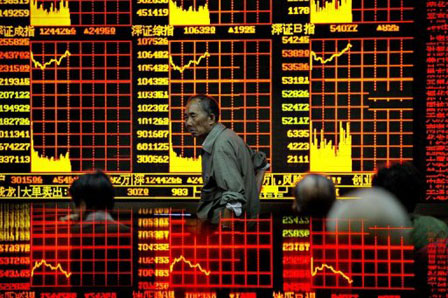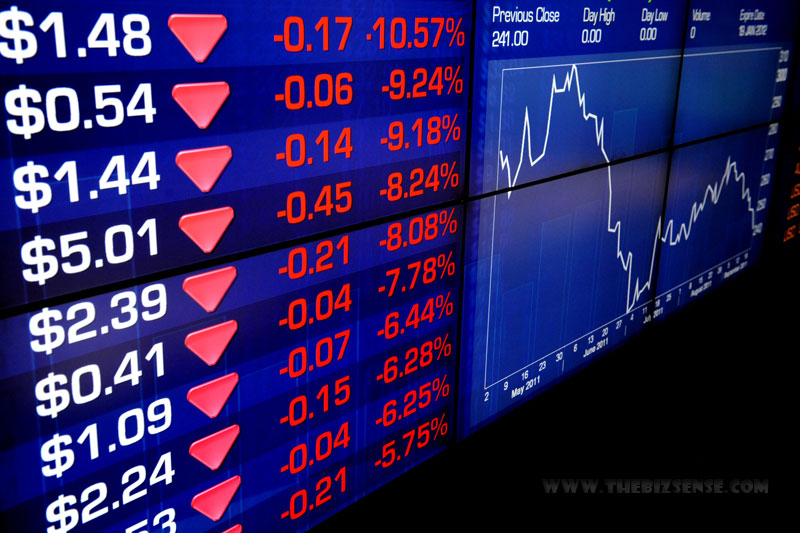
Stock-markets are falling. Does this mean that the nine-year bull market has come to an end, that shares are finally adjusting to some uncomfortable realities, as their extreme valuations have long suggested they would?
Shares: Should You Panic? – Let’s look at the big picture…
· The correction (or trend reversal?) we’re currently experiencing is the first major one since 2015. But it wasn’t unexpected after a year of an uncannily stable rise, one that’s accelerated in recent months.
The American mega-stocks that have been propelling markets to successive new record highs – the “FANGs” – don’t seem to face any significant threats to their astonishing growth businesses, while the current pause in the upward momentum of their shares looks perfectly normal.
Judging by historical precedents, it could well have much further to go – falling or stabilizing – without signalling anything worse than a correction.
· The world economy is not only in good shape, with synchronized growth in the major countries, but it’s actually picking up speed. The International Monetary Fund recently raised its forecast for this year and the next to growth rates of 3.9 per cent.
It’s hard to see how the bear can return to stock-markets while economic growth currently looks so good and there is no realistic prospect of a proximate recession.
· Investors are understandably worried that central bankers are going to spoil the party by curbing the flow of easy money that has been a key driver of the bull market.
So far that has been more about posturing than reality. This year the four most important central banks, those of the US, Europe, China and Japan, have already pumped the equivalent of an extra $500 billion into the global financial system.
Bull markets usually only die when central bankers “take away the punch bowl,” as an American Federal Reserve chairman once said.
Even when they do start to show greater intent to speed up the process of “normalization” of interest rates, it’s not conceivable that they’ll take the risk of doing that so aggressively that they torpedo stock-markets.
· The bond markets, which globally are much more important than stock-markets, are certainly behaving ominously. Both US Treasuries and Europe’s most important bonds, the German Bunds, have been falling sharply in value since early December.
However, their yields are still low – extremely low in the case of the Bunds – which means they have to go much further to signal an impending crisis.
The consensus view seems to be that the yield on ten-year Treasuries, now around 2.7 per cent, needs to rise convincingly above 3 per cent and head for 5 per cent before the trend becomes really worrying.
Even so, equities can often be remarkably resilient in the early phase of a bear market in bonds.
· Government policies need to switch towards ones that would dampen economic growth, such as another phase of “austerity,” to be a threat to stock-markets.
Currently, things are moving in the opposite direction.
America is experiencing fiscal stimulus from tax reform and a “bonfire” of regulations, with additional boosts probable this year from infrastructure modernization and protectionism. With federal elections at the end of this year, the Republicans will keep their feet on the pedal to hold off the threat from the Democrats – and perhaps unpleasant developments in the Russian “collusion” farce.
Germany’s two major parties are keen to move away from years of impressive fiscal conservatism and start to loot the huge fiscal surpluses, to spend-spend-spend to counter the populists who threaten the power of the political elite. That will give the economy a boost, at least for a few years.
China’s economy continues to deliver astonishing growth – 6.9 per cent last year – and may slow somewhat as its superbly competent government gives more attention to implementing strategic reform. Middle-class spending continues to explode, major problems such as pollution and excess capacity in “legacy” industries are being tackled effectively, while the breathtaking One Belt One Road plan gathers momentum.
copyright: Martin Spring of OnTarget

